
1998: The Toll Keeper Story is a quietly devastating narrative simulation that insists you inhabit one woman’s impossible job as a nation frays at the edges. You are Dewi, a pregnant toll keeper in the fictional Janapa, and the game’s emotional force comes from shrinking monumental historical collapse into a series of intimate, morally fraught moments; deciding who passes, who’s turned away, and how far you’ll risk everything to shield the child you carry. Each seemingly small choice accumulates weight, turning routine paperwork into acts of care, compromise, or survival; watch the trailer here:
Gameplay Loop
The core loop is deceptively simple and ruthlessly exacting. Every shift you inspect vehicles, verify documents, and decide who crosses the toll; actions that read like bureaucracy but land like moral blows: ration cards, forged papers, frantic refugees, bribery, and armed patrols all arrive at your booth. As resources dwindle and unrest escalates; supplies vanish, checkpoints harden, protests choke the roads; routine checks ossify into life‑and‑death judgments. The interface rewards careful attention and small rituals; a deliberate stamp, a timed pause, or a sympathetic nod can redirect a family’s fate, expose a threat, or buy you a little more time.
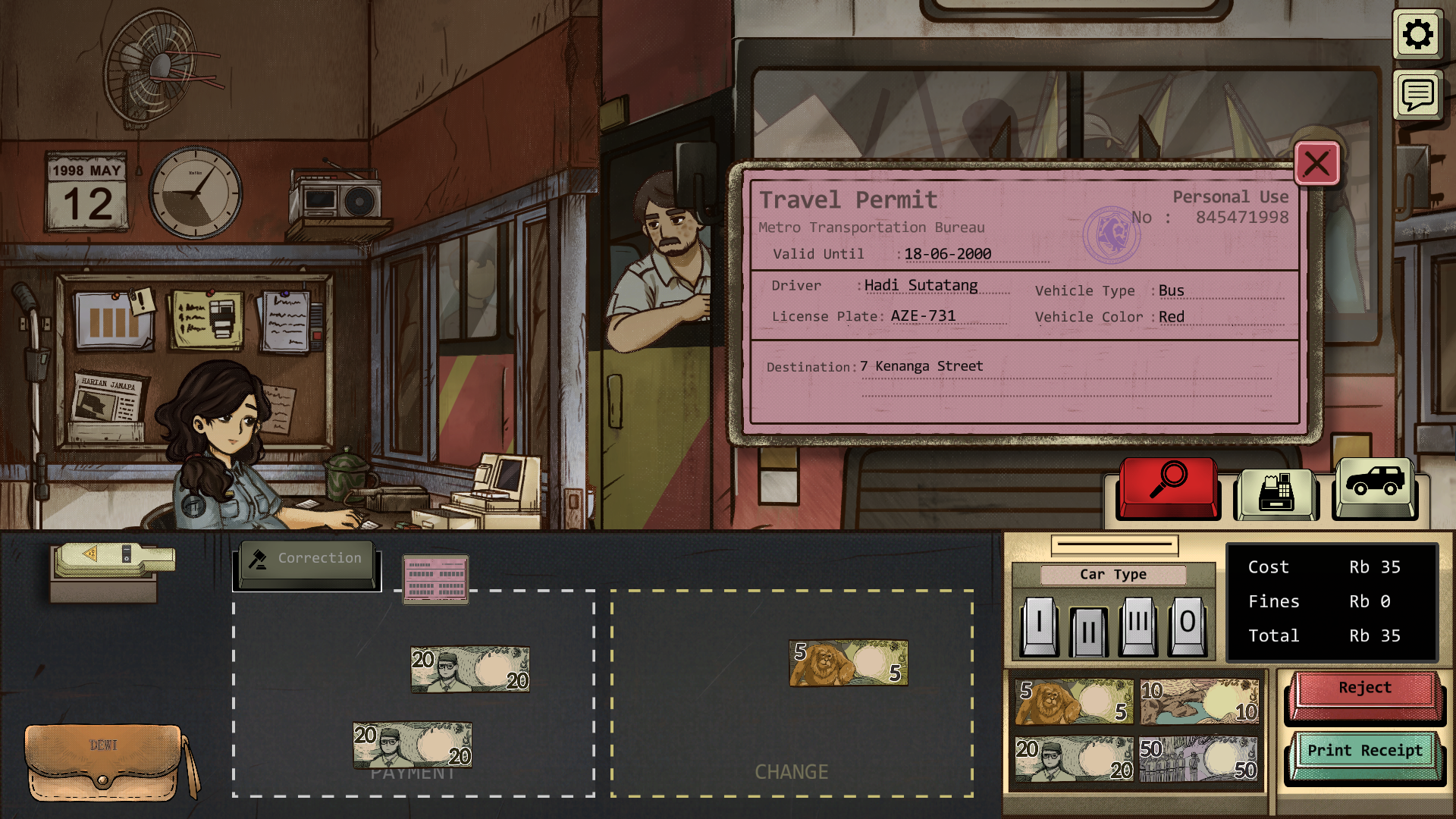
Choices and Consequences
Decisions pulse at the game’s core; every choice lands with physical and moral heft. There are no tidy answers, an act of compassion might save a child and expose you to grave risk; rigid rule‑following can keep you employed while condemning strangers to hunger or arrest. Each handshake, stamp, or withheld ticket sends ripples outward; families are reunited or torn apart, coworkers gain favor or face suspicion, and your own safety and the future of your unborn child are constantly weighed against duty and desperation.
Cumulative Moral Weight
The simulation keeps a careful ledger of your actions. Outcomes aren’t isolated vignettes but accumulating consequences: small compromises chip away at reputation and resources, while rare acts of courage open new, morally ambiguous paths. Later scenes remember earlier choices; characters respond differently, new options appear or close, and the emotional stakes shift in ways that reward reflection over brute force.

Emotional Mechanics
Choices aren’t just branches on a tree; they’re emotional levers. Guilt, fear, resolve, and fatigue are tracked in subtle ways that influence dialogue, NPC behavior, and available actions. Your mental and physical state can limit options, stress might slow reaction time or cloud judgment, forcing you to consider not just what you do, but whether you can live with what you’ve done.
Complexity Without Judgment
The game resists moralizing. Instead of prescribing right answers, it exposes the human cost of survival and asks players to sit with ambiguity. The result is a branching, resonant narrative where every decision matters, and nothing about surviving a collapsing nation feels simple or clean.
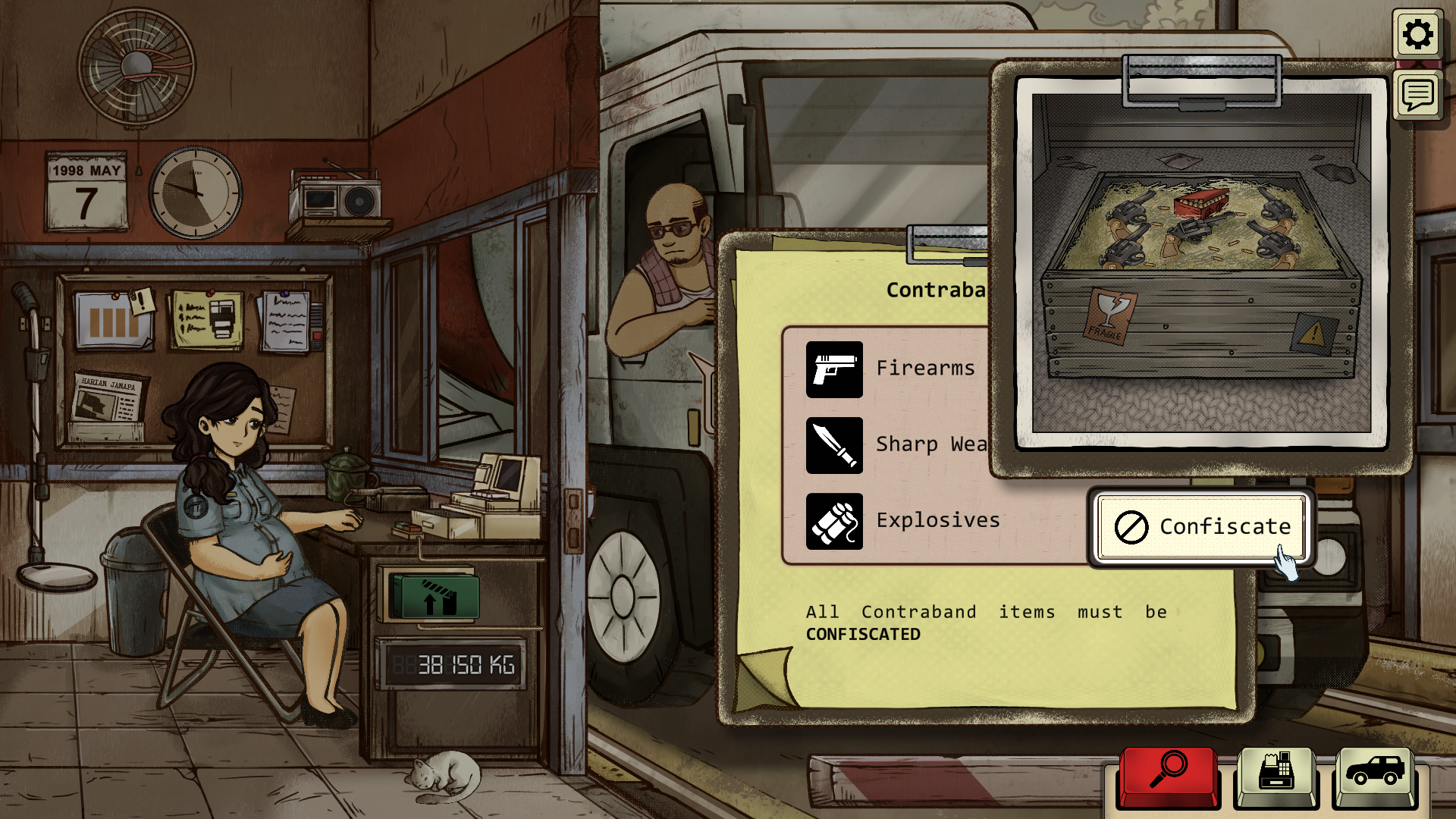
Themes and Tone
The game places survival, motherhood, and moral ambiguity front and center as institutions crumble. It avoids spectacle and cheap outrage, choosing instead to render fear, tenderness, and incremental sacrifice with restraint and care. Dewi is not a poster for resistance; she is a person improvising within tight limits: rationed time, shrinking resources, and the constant arithmetic of risk versus reward.
The narrative compresses large‑scale history into intimate vantage points, asking players to witness how political collapse is lived at a human pace: whispered negotiations, furtive favors, and choices made in the dark between shifts. Rather than celebrate heroics, the experience cultivates reflective discomfort; quiet moments that linger, moral dilemmas that have no tidy answers, and the slow accumulation of small costs that change who Dewi becomes.
Emotion is treated as material: love and fear shift available options, exhaustion blunts judgment, and maternal instinct reframes survival as care. The result is a game that asks you not to triumph over history but to endure it; bearing its weight, making imperfect decisions, and feeling the ache of consequences long after the toll booth falls silent.
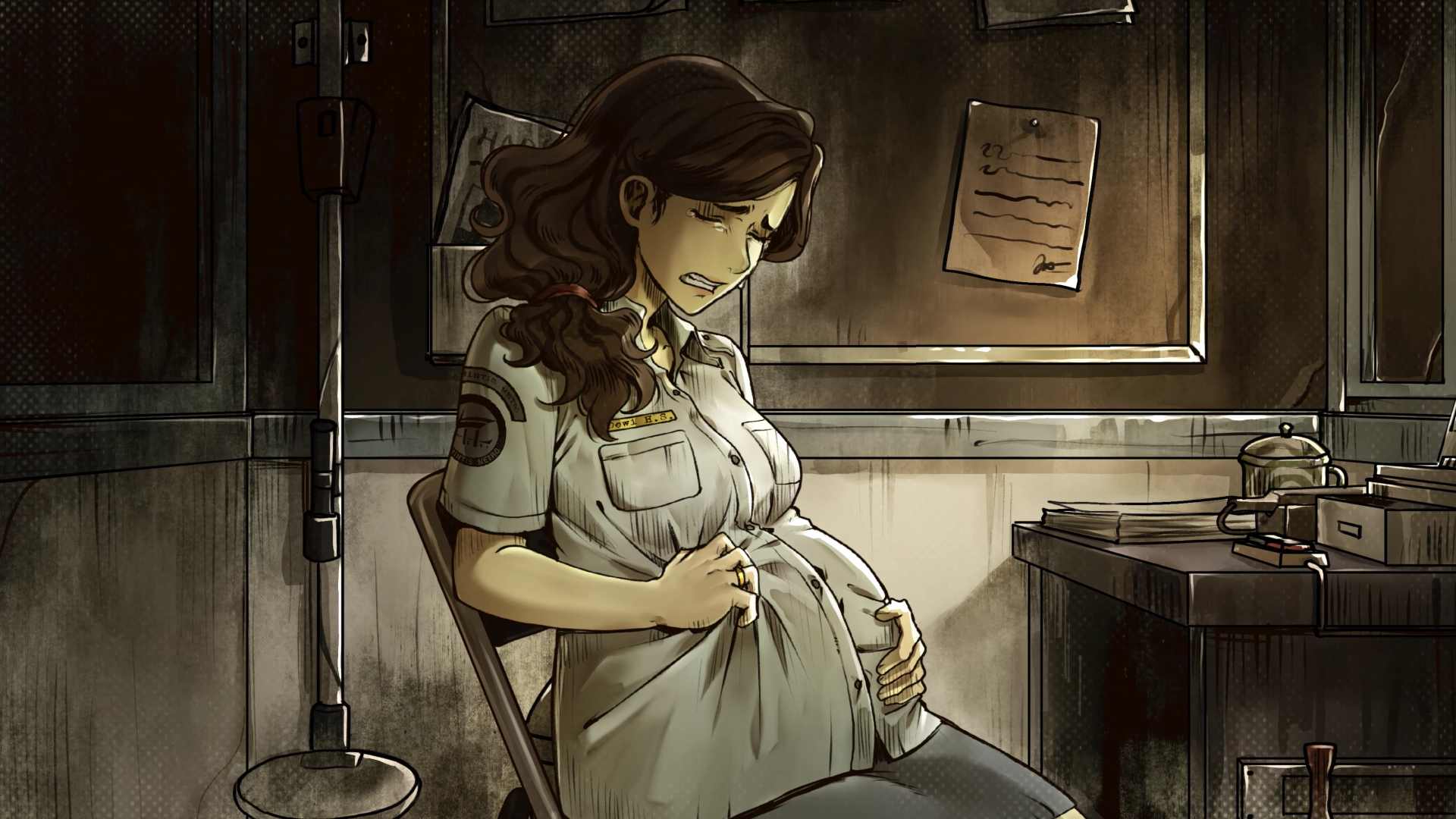
Visuals and Sound
The game’s 90s‑inspired aesthetic is tactile and deliberately worn: halftone dot overlays, creased paper textures, grainy scanlines, and a limited color wash of muted blues and washed grays that read like photocopied flyers and twilight newsprint. UI elements feel like found ephemera; typewritten labels, stamped permits, and brittle paper dialogs; so every menu and prompt reinforces the world’s collapsing infrastructure. Animation is spare but expressive; small gestures, posture, and eye movement carry the emotional load where words do not.
Audio completes the worldbuilding with a quiet, lived‑in soundscape: the mechanical clack of toll gates, the low drone of generators, distant protest chants, and the restless sigh of traffic. A restrained, melancholy score threads through shifts, swelling only at moments of moral crisis to avoid melodrama. Together, art and sound cocoon Janapa in a believable, era‑specific atmosphere that feels intimate, worn, and painfully present.
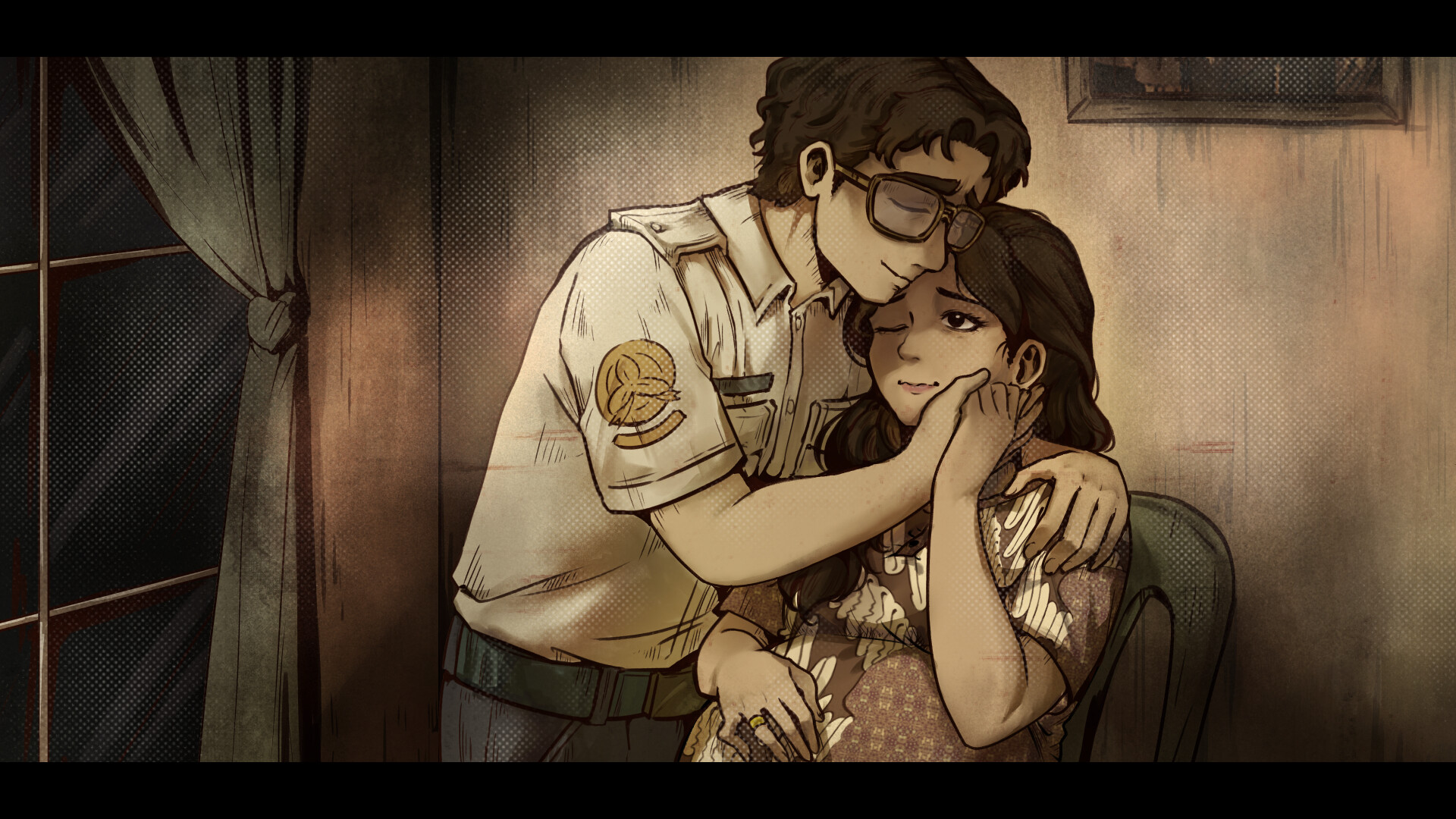
Structure and Replay
Runs are organized around work shifts and pivotal narrative beats rather than combat encounters or abstract puzzles. Each shift is a compact scene with its own rhythm; arrival, inspections, escalating incidents, and the aftermath; so the drama unfolds like a day compressed into tense, consequential minutes.
Why you’ll replay
Replay value is driven by moral curiosity and narrative branching; different choices unlock alternate scenes, reveal secondary characters’ backstories, and produce varied tonal epilogues that range from quietly hopeful to devastatingly ambiguous. The desire to see how a single stamped pass or withheld mercy reshapes lives provides the strongest pull to return.
Meta progression
The meta loop rewards exploration of the story world: collectible vignettes, character dossiers, and an illustrated artbook expand Janapa’s cultural texture and make each unlock feel meaningful rather than ornamental. These extras deepen context and invite players to assemble a fuller picture of the crisis beyond Dewi’s booth.

Player agency and pacing
Save options and branching checkpoints protect agency without flattening consequence; you can explore alternate paths without erasing the emotional cost of earlier choices. Together, these systems encourage multiple, reflective playthroughs so players can observe how small, everyday acts accumulate into lasting change.
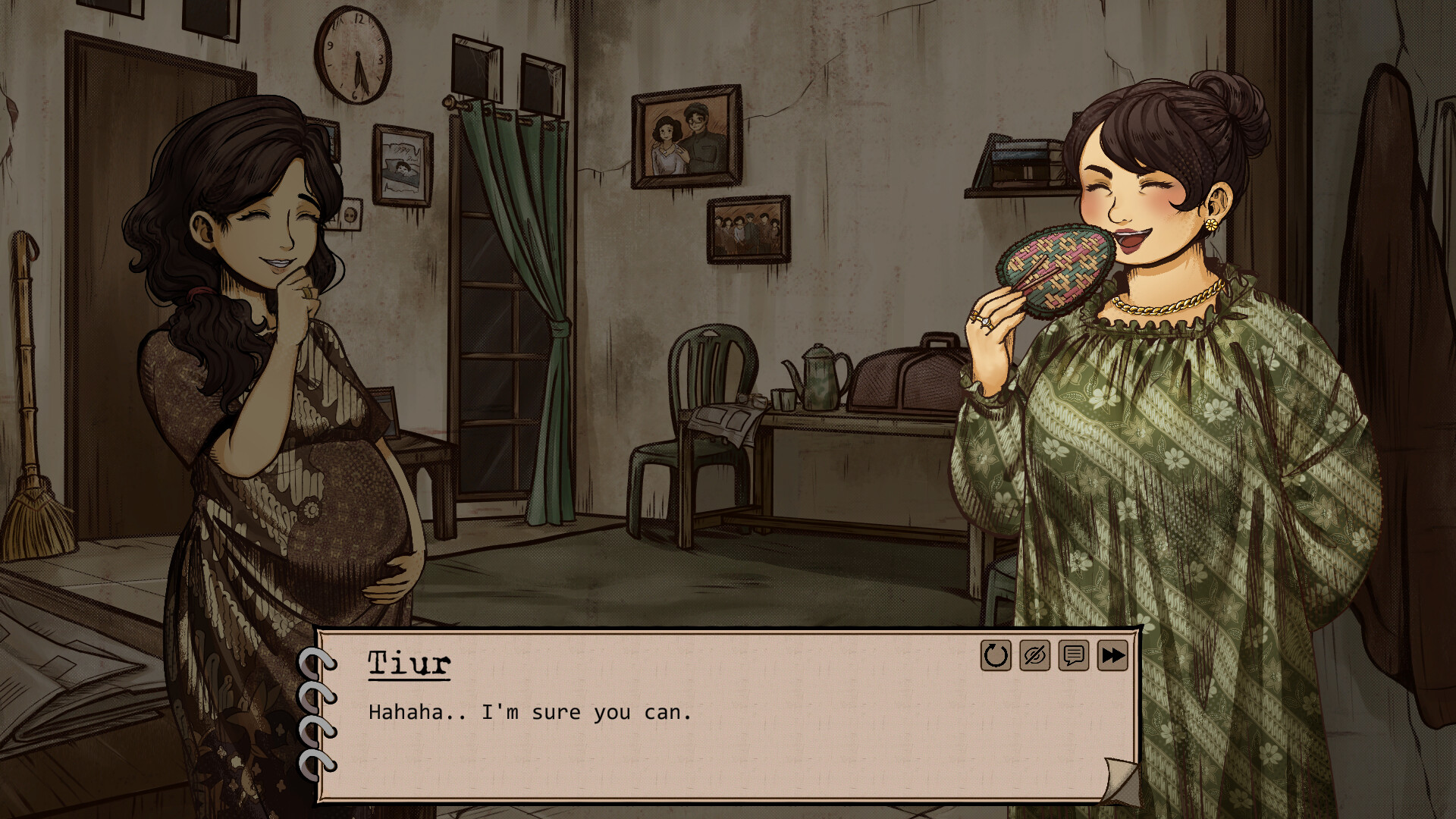
Context and Inspiration
Drawing on the upheaval of the 1998 Asian financial crisis and Indonesia’s turbulent moment, the game transposes those emotional truths into the fictional nation of Janapa to examine collapse from a human scale rather than re‑enact specific historical events. The team treats the source material with restraint and respect: survivor perspectives, domestic pressures, and everyday survival take precedence over spectacle, and the story deliberately focuses on the quiet costs of crisis; displacement, scarcity, moral erosion, and the endurance of caring relationships.
To avoid appropriation, the narrative uses fictionalized settings, characters, and institutions while reflecting researched social and economic dynamics; its goal is empathy and understanding, not historical shorthand. The design emphasizes ethical listening: details are handled sensitively, consequences are shown rather than sensationalized, and the game invites players to witness how political and financial collapse filters down into the small, urgent choices that define ordinary lives.
The chosen launch date carries intentional weight, GameChanger Studio frames it as a quiet recognition of youth movements and civic courage, tying the game’s themes to a real‑world moment of collective action.
As a concrete gesture, the studio will donate 20% of artbook revenue to Indonesian Women in Game (IWIG), linking the project’s focus on care, future possibility, and female experience to tangible industry support for creators and advocates.

Final Verdict
This is not light entertainment. Compact and morally dense, 1998: The Toll Keeper Story asks you to inhabit the slow pressure of daily survival; where paperwork becomes moral calculus, small favors become seismic, and each decision reshapes a fragile future. If you seek games that value empathy, consequence, and quiet emotional resonance over spectacle, Dewi’s story will linger: a restrained, powerful work that turns ordinary choices into unforgettable human moments.
Watch and Wishlist
• Add to your wishlist: Wishlist 1998: The Toll Keeper Story on Steam and your preferred mobile store to get launch and sale alerts.
• Follow the developer: Follow GameChanger Studio on their official channels for patch notes, translation updates, and developer commentary.
• Watch trailers and developer diaries: Look for the launch trailer, gameplay clips, and behind‑the‑scenes diaries to see how mechanics and narrative choices play out.
• Tune into streams and playthroughs: Watch early playthroughs and creator reactions to see how different moral paths unfold and which choices resonate most.
• Join the community: Hop into the game’s Discord or social feeds to discuss choices, share screenshots, and find thoughtful playmaps for multiple runs.
• Preview the artbook: Keep an eye out for artbook previews and release information; a portion of proceeds supports Indonesian Women in Game (IWIG).
• Save clips and notes: Bookmark poignant scenes and dialogue to revisit later; they make excellent discussion starters for book‑club style or reflective multiplayer sessions.
Key Takeaways
• Developer intent and impact: GameChanger Studio launches Oct 28, 2025 with community support initiatives, including donating a portion of artbook revenue to Indonesian Women in Game (IWIG).
• Core premise: Play as Dewi, a pregnant toll keeper in the fictional Janapa, navigating moral choices while a nation collapses.
• Gameplay focus: Narrative simulation built around shift‑based interactions: inspect vehicles, verify documents, and decide who passes.
• Moral weight: Small, everyday decisions carry cumulative consequences that reshape characters, resources, and future options.
• Emotional center: Survival and motherhood drive the story; the game privileges empathy and quiet sacrifice over spectacle.
• Pacing and structure: Compact, vignette‑style shifts and key narrative beats create dense, replayable runs rather than combat or puzzle loops.
• Visual and audio identity: 90s‑inspired halftone textures, old‑paper UI, muted blues, and a restrained soundscape root the game in a specific era and mood.
• Historical sensitivity: Inspired by real events from the 1998 Asian financial crisis but set in a fictional country to explore emotional truth responsibly.
• Replay motivation: Branching scenes, collectible vignettes, and tonal epilogues encourage multiple playthroughs to see how choices ripple outward.
Game Information:
Developer: GameChanger Studio develops and publishes the title, bringing its experience from narrative work such as My Lovely Trilogy to a project that blends historical sensitivity with intimate storytelling.
Publisher: CC_Games
Platforms: PC - Steam (reviewed), Google Play Store
Release Date: 1998: The Toll Keeper Story launches October 28, 2025 on Steam and the Play Store, arriving as a finished narrative experience built for desktop and mobile audiences.
Score: 9.5 / 10
1998: The Toll Keeper Story is a rare narrative simulation that translates historical collapse into intimate, morally charged gameplay. It pairs taut, shift‑based mechanics with an emotionally rigorous script and a tactile 90s aesthetic to create a sustained, haunting experience that lingers long after play.